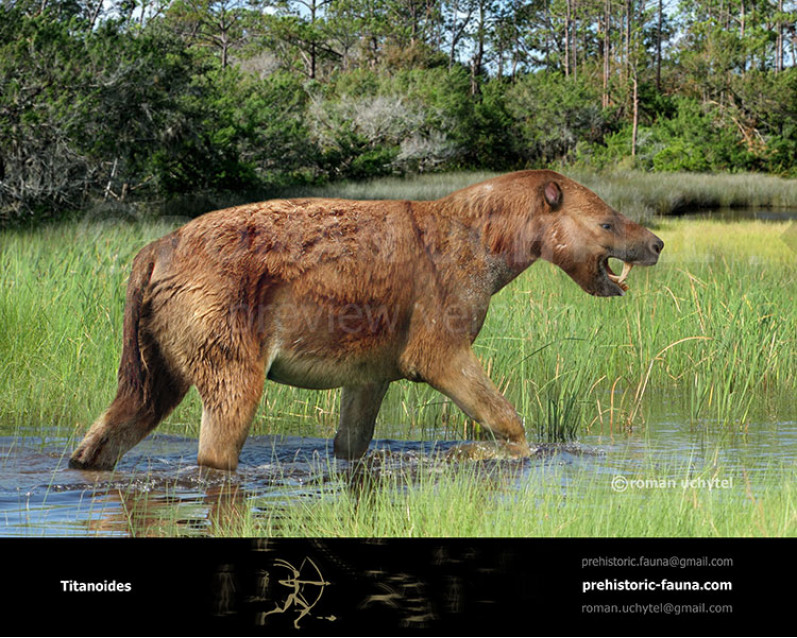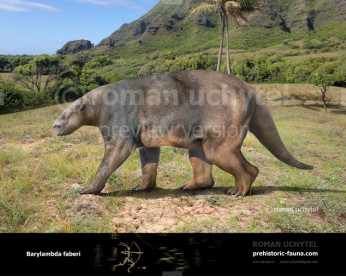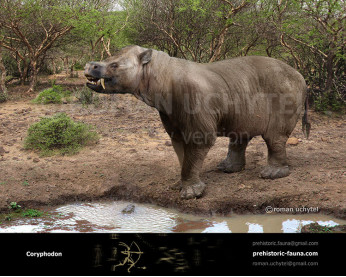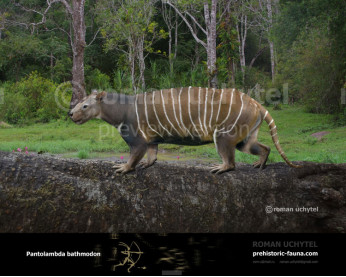Titanoides
9595Titanoides (Titanoides Gidley, 1917)
Order: †Cimolesta
Suborder: †Pantodonta
Family: †Titanoideidae
Expansion: Paleocene in North America
Dimensions: 2,2 m in length, 110 cm in height, 90 - 200 kg of weight
A typical representative: Titanoides Gidley, 1917
Titanoides is an extinct genus of pantodont mammal. It was about 2 m long and weighed between 200 kg. Titanoides was one of the early Tertiary browsing mammals called pantodonts. Even though they had huge canine teeth, they were herbivores but may have been omnivores too. Their feet possessed five clawed digits and Titanoides was the largest mammal that inhabited North Dakota 60 million years ago when western North Dakota was a subtropical swampland. These animals are related to Pantolambda and had five-fingered hands, with almost equal in size fingers with terminal phalanges a bit like bear claws. All other pantodonts find the extremities of which are known to have blunt hooves at the front and rear limbs. They may have eaten roots, leaves, bark,and also probably ate small animals and carrion.
Titanoides (Titanoides Gidley, 1917)
Order: †Cimolesta
Suborder: †Pantodonta
Family: †Titanoideidae
Expansion: Paleocene in North America
Dimensions: 2,2 m in length, 110 cm in height, 90 - 200 kg of weight
A typical representative: Titanoides Gidley, 1917
Titanoides is an extinct genus of pantodont mammal. It was about 2 m long and weighed between 200 kg. Titanoides was one of the early Tertiary browsing mammals called pantodonts. Even though they had huge canine teeth, they were herbivores but may have been omnivores too. Their feet possessed five clawed digits and Titanoides was the largest mammal that inhabited North Dakota 60 million years ago when western North Dakota was a subtropical swampland. These animals are related to Pantolambda and had five-fingered hands, with almost equal in size fingers with terminal phalanges a bit like bear claws. All other pantodonts find the extremities of which are known to have blunt hooves at the front and rear limbs. They may have eaten roots, leaves, bark,and also probably ate small animals and carrion.




